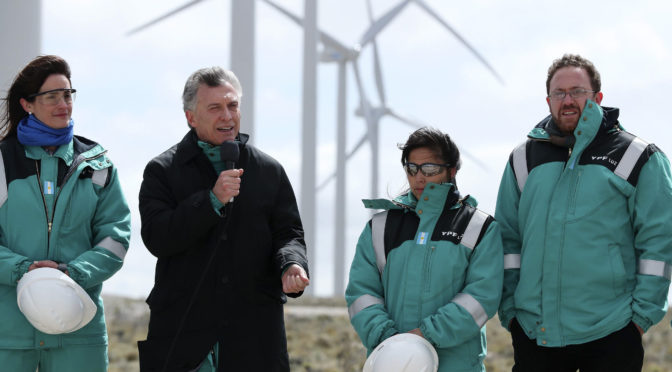The generation of energy from renewable sources grew in recent years.
The goals set forth in the law were not met, but official sources are estimated in 2021, 15% of the electricity will be renewable.
The greatest growth was in wind power and solar energy.
In October 2015, during the mandate of Cristina Fernández de Kirchner, a new promotion law for the development of renewable energy was enacted, which was implemented by the government of Mauricio Macri and established what are (and what are not) renewable sources of energy and set goals and deadlines for compliance that were not met. Was it really advanced in this area, which the management of Cambiemos drove?
What are the sources of renewable energy?
All non-fossil sources (that is, other than oil, coal or gas) and can be renewed unlimitedly. These sources can be grouped as follows:
the wind energy,
solar, photovoltaic and solar thermal energy,
the group of bios (biomass, biogas and biofuels, which refers to the use of forest, agricultural and livestock waste) and
Small hydroelectric uses. On this last group, the legislation is very clear: only those power plants whose power is less than 50 megawatts of power (MV) are considered renewable hydroelectric sources.
The law established that by 2017 8% of electricity should come from renewable sources. In 2019 the percentage increased to 12%, in 2021 to 16%, in 2023 to 18% and in 2025 it reached 20%.
According to CAMMESA’s most recent monthly report of June 2019, 5.4% of the electricity generated comes from renewable sources. That percentage was 2% in December 2017, in both cases far from the goals. Even so, the percentage almost tripled.
“The goals were intended to be approved between 2013 and the beginning of 2014. Finally, that law was passed at the end of 2015. There are almost two years of difference, so we left quite late to do what had to be done to comply with the schedule With projects already tendered and estimating how much demand is going to increase, by 2021 we should be at 15%, ”Maximiliano Morrone, National Director of Promotion of Renewable Energies and Energy Efficiency, of the Ministry of Energy explained to Checked.
How that increase was achieved
Different tools were used, such as the RenovAr program, in which the state-owned company CAMMESA is putting out to tender the generation of the different renewable energies to the private companies that build the projects and manage the power generation. Then Cammesa guarantees the purchase of that energy for 20 years. There were four rounds of RenovAr tenders (1, 1.5, 2 and 3, the latter closed at the beginning of last August).
“The incentives in general were well aligned to induce compliance with the law. A lag of a few months in the fulfillment of the goals is normal and reasonable, ”he said before the consultation of Checked Esteban Kiper, economist, founding partner of the consultancy Economy and Energy SA and official of the Ministry of Economy and Public Finance between 2009 and 2012 , vice president of the Mint between 2012 and 2014 and vice president of Cammesa, the Wholesale Electricity Market Management Company, between 2014 and January 2016.
According to Cammesa data, wind and solar energy were the fastest growing in the last two years. The installed wind power was 227MV in 2017 and grew to 750MV in 2018 and 1,017MV in 2019.
For solar energy, this variable went from 8MV in 2017, to 191MV in 2018 and 330MV in 2019. Small hydroelectric uses remained stable in recent years, close to 500MV, but their growth was lower: in 2014 the installed power It was 381MV and reached the current 498MV in 2016. In the case of bios projects, prices are higher and, therefore, had less development.
In part, this growth in wind and solar sources is explained because prices are more competitive, even lower than those of the electrical system in general. In RenovAr’s average prices, wind and solar energy are located at US $ 50 / MV, while that of small hydroelectric, biomass and biogas uses exceeds US $ 100 / MV.
But not everything revolves around the generation and prices. In order for it to be used, the transport network must be prepared to receive the energy. If the network cannot incorporate that energy, production is wasted. The fact of moving forward with tenders without having the networks ready is one of the criticisms of the current process, Kipper explained: “Granting those contracts without having tendered the lines was a mistake because of optimism.”


